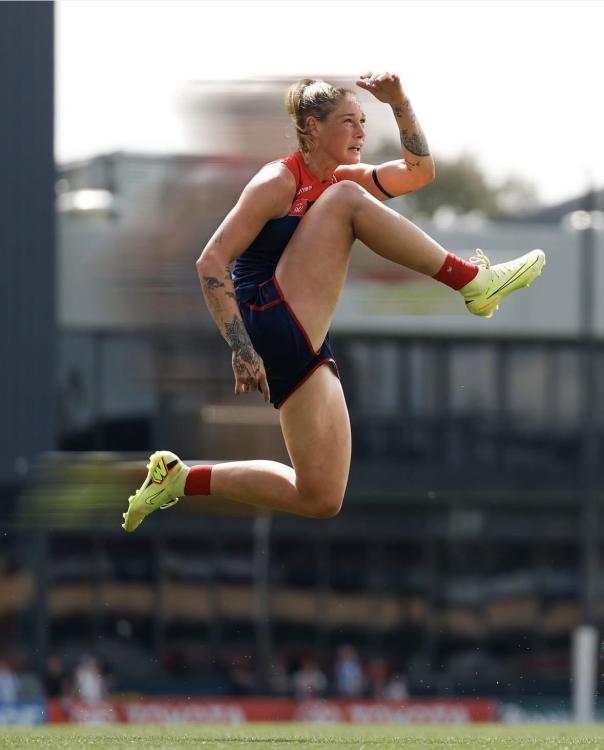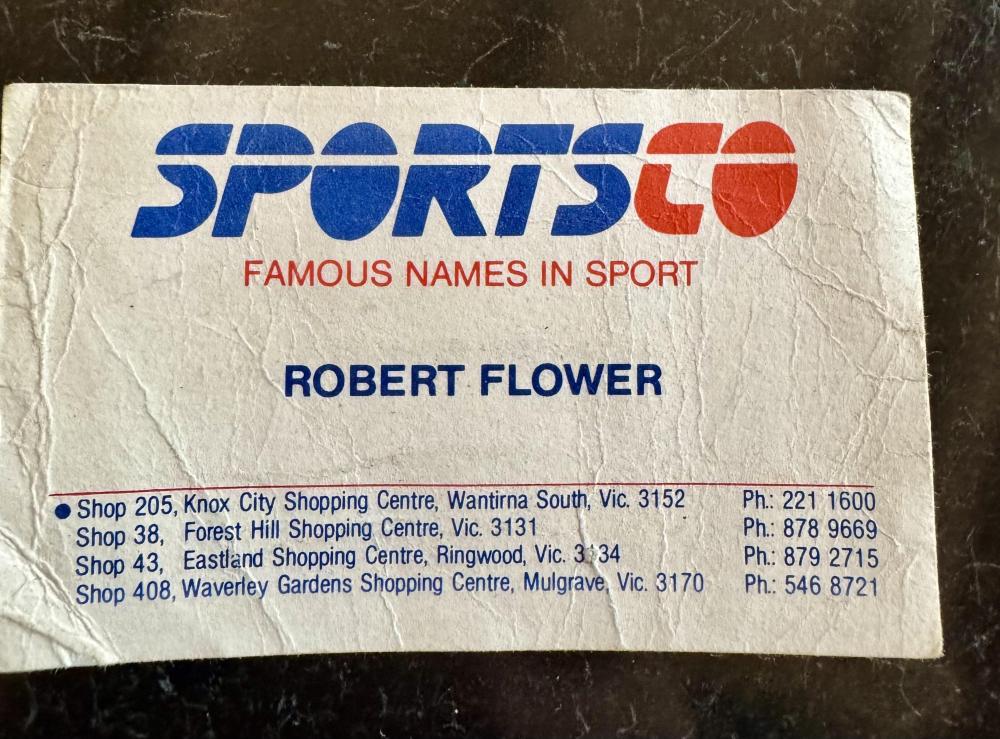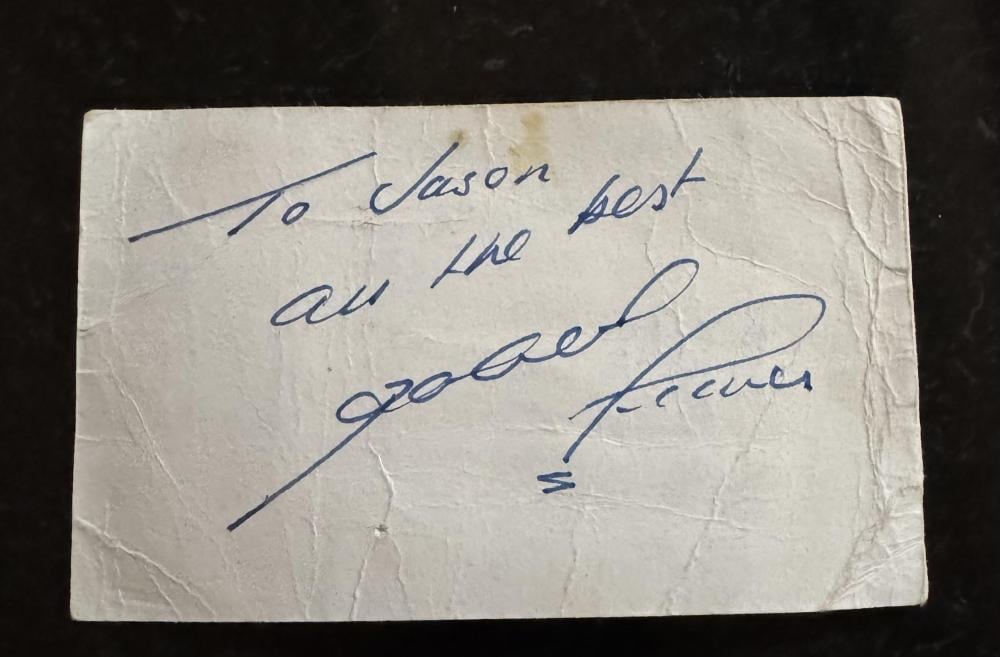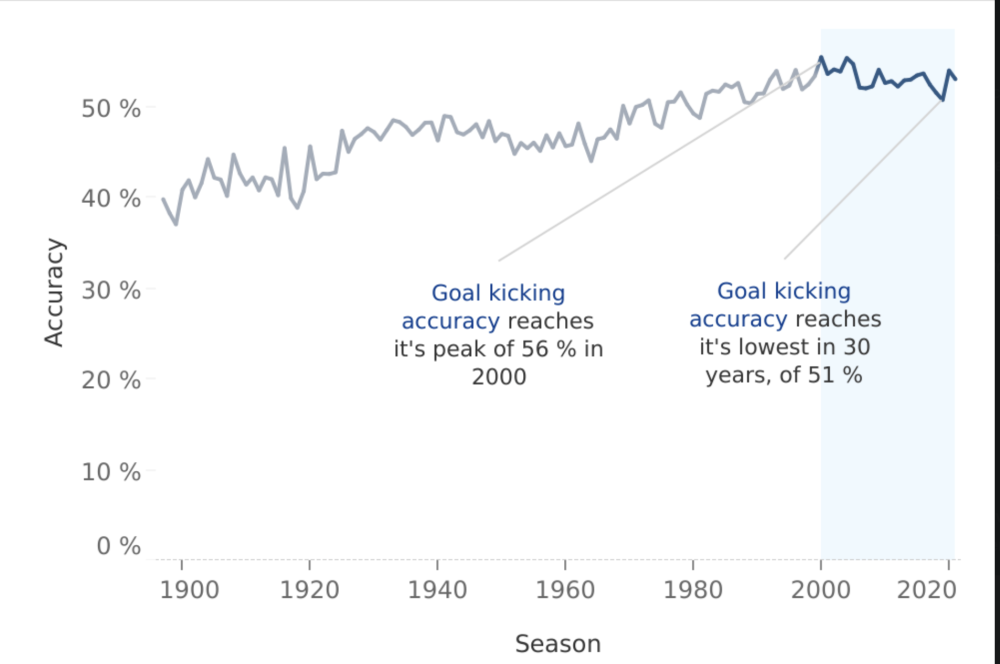Everything posted by Grapeviney
-
AFLW: PF vs North Melbourne
- Robbie Flower
I’m with @Fork 'em - Pendles is all silk, but the grace and elegance with which Flower moved and played was in a class of its own. There’s no modern equivalent and no need to search for one. He was so good that many of the highlights videos on here and YT weren’t even compiled by a Dees fan; they were painstakingly and lovingly put together over a long period of time by a Bomber supporter - the legendary @Ash35.- Robbie Flower
He played 269 games without seeing September action - and then booted 5 goals in his first final, followed by 4 the week after. The goal at the 1.50 mark of this highlights clip is one of the all-time greats.- Who Will Be Our Next Coach?
The Herald Sun think it's enough of a story to be reporting her news of his meeting today. And the job does exist, in the same way that a whole lot of other people are already employed by this club that isn't yet a club. They need to keep building the architecture of the whole thing in the event it does get up. And don't be fooled into thinking the fate of the Devils rests with the Tassie Parliament. The AFL hold all the cards, and can alter the stadium deal at any time to make it palatable down there. They're sticking to their guns for the moment, but will know internally about their own willingness to bend further down the track to get it over line .. ie whether a job for Bucks will actually be there.- Who Will Be Our Next Coach?
The opposite is true. She's been a thorn in the AFL's side throughout her career, more than any other footy journalist by a country mile. If you believe otherwise you haven't been paying attention the past 40 years. And if the AFL want Buckley to coach Tassie they'll do whatever is required to make it happen. They don;t need to run a publicity campaign through the media to convince either the fans or Bucks. The whole idea is kind of absurd - "let's get one of the most hated journalists in the game to persuade everyone".- From the vault
Found this while cleaning up today. He was always so polite and friendly when you went into the store, happy to talk footy and sign an autograph.- The Soccer thread
Long may it continue. City never looked threatening, and my trepidation about a possible trouncing quickly turned into a relaxing and enjoyable watch! COYS !!- Sharing My Ongoing Cancer Experience
Love those images Tim .. hope the news gets better after this setback and you can make your gig.- Goalkicking
Was doing a bit of digging on accuracy (it's hard to find data) and 12.12 is the most common score in VFL / AFL history, which is consistent with the numbers below. From a low of 38% when the game began, accuracy steadily improved over the decades before hitting its peak of 56% in 2000, which is about the time players became full-time professionals. But things have declined since then, back to 51% in 2020, and as low as 49.1% last month (thanks to us, in part), which may or may not be related to things like fatigue and the much heavier workload of the modern player. A few other numbers to mull over: 1987 - 1999: 52.4% 2000 - 2010: 53.7% 2011 - 2020: 52.8%- Congratulations Garry Lyon - Inducted into AFL Hall of Fame.
Not sure about the Bears / Lions, but Swooper threw him into the middle in the last against Essendon at Windy Hill in 1990, and he and Darren Bennett won us the game, turning a 34-point deficit halfway through the final quarter into an 8 point win. We kicked seven goals in 17 minutes! A truly famous victory.- Congratulations Daisy Pearce - Inducted into AFL Hall of Fame.
A giant of the game and the club, and one of our finest ambassadors. Her story isn't finished yet. I hope she becomes the first female coach in the men's game, and goes on to win a flag - with us. ❤️💙🏆💙❤️- Nyirripi x Demons t-shirt
The club advertised these awesome t-shirts on the weekend as only being available at the ground in Alice on the day. But it seems the leftovers are now on sale online. Love the old-style Demon mascot! https://www.houseofdarwin.com/products/demons-x-nyirripi-tee- The Soccer thread
Absolutely rapt for Ange, and glad that Harry Kane got a cup too. No-one at Spurs deserved silverware more.- Welcome to Demonland: Harvey Langford
Just torched the Dons and helped Collingwood to 3 goals in a few minutes with the game on the line in the 3rd. In the wet. He’s no Jack Viney but he doesn’t need to be; he’s pure silk and wins more than enough of his own ball. People who equate his slight frame with a soft attitude are mistaken. Those who criticise him for not taking enough contested marks - lol.- Sharing My Ongoing Cancer Experience
I’m all gigged out, I’m afraid, although music is still very central to my life. But it’s at home these days.- Sharing My Ongoing Cancer Experience
Great pics @hardtack, especially the ones of the Buddhadatta crew ! Hope the good news keeps coming.- The New Look Demonland
Site looks great, but is there any way to change the colours? I'm not a fan of red and blue!- 2025 COACHES VOTES: Round 01
I operate on the assumption that if there is any bias in the voting, it's likely to be toward the opposition team, with coaches more inclined to mark their own players more harshly.- ChatGPT Predicted Ladder 2025
A while back I asked it to write a match report of the 2021 Grand Final. It said the Bulldogs came back in the last quarter, but it was too little too late. Edit: Just did it again, and to say it's wrong is an understatement. It's a Grand Final played in the Twilight Zone, where the Dogs controlled the game early, we come back in the second quarter, and Goodwin has been at the club since at least 2010 😂 ----- The 2021 AFL Grand Final saw Melbourne end a 57-year premiership drought, defeating the Western Bulldogs in a dominant display of skill and composure. Played at Optus Stadium in Perth due to COVID-19 restrictions, the Dees’ triumph was built on their relentless pressure and relentless attack, which overwhelmed a Bulldogs team that had no answer in the second half. First Half: Bulldogs Start Strong, But Dees Take Control The Western Bulldogs came out with intent, led by their midfield stars Marcus Bontempelli and Jack Macrae, as they controlled the early stages. The Bulldogs' pressure on the ball carriers was evident, and their tackling intensity was impressive, keeping Melbourne's forwards in check. Despite this, Melbourne was clinical when it mattered, with Christian Petracca and Clayton Oliver stepping up with strong performances in the middle. By quarter-time, the Dogs had a narrow lead, but Melbourne began to assert their dominance in the second term. The Dees’ midfield, led by Petracca, started to break free, providing excellent delivery into their forward line. Bayley Fritsch, who had a standout match, was dangerous in front of goal, contributing two goals in the second quarter, while Max Gawn, the towering ruckman, played a crucial role both in the air and at ground level. Second Half: Dees Surge to Victory With the margin at just five points in Melbourne's favor at half-time, the game was still up for grabs, but it was all Melbourne after the break. The Bulldogs' midfielders struggled to keep pace as the Dees applied enormous pressure and moved the ball with precision. The game’s tempo increased, and Melbourne’s superior fitness began to tell. Petracca continued his superb form, winning contested ball and linking up effectively with teammates. He would go on to be awarded the Norm Smith Medal as the best player on the ground. His outstanding performance included an awe-inspiring goal in the third quarter, where he sidestepped several opponents before slamming the ball home from long range. The Dees' dominance in the second half was punctuated by a blistering third-quarter burst. They kicked six goals to one, stretching their lead and putting the game well beyond the Bulldogs’ reach. The pressure applied by Melbourne's forwards, including Ben Brown and the ever-dangerous Fritsch, was relentless, forcing turnovers and creating scoring opportunities. By the time the final siren sounded, Melbourne had built a commanding 74-point lead, a fitting reward for their season of brilliance. Their powerful team performance had overcome the Bulldogs’ early fightback, with the likes of Gawn, Petracca, and Oliver all playing pivotal roles in their triumph. Key Players: Christian Petracca: 39 disposals, 2 goals, Norm Smith Medalist. Petracca was the standout performer, leading from the front with a sensational display. His ability to win contested possessions and create scoring opportunities was unmatched. Max Gawn: 17 disposals, 16 hitouts, 1 goal. As captain and ruckman, Gawn was a dominant force around the ground and in the air, providing Melbourne with critical drive out of the middle. Clayton Oliver: 27 disposals, 7 tackles. Oliver was an engine in the midfield, providing great support for Petracca. Bailey Fritsch: 6 goals. The forward was clinical in front of goal, proving to be one of the Bulldogs' biggest headaches all match. Marcus Bontempelli (Bulldogs): 25 disposals, 1 goal. While the Bulldogs were outclassed in the second half, Bontempelli was one of the few players who could hold his head high. Aftermath: The win was a historic moment for Melbourne, securing their first premiership since 1964. It capped off a remarkable season under coach Simon Goodwin, who had been with the club for over a decade. Melbourne had shown resilience all year, but their performance in the Grand Final was the culmination of years of hard work and development.- Sharing My Ongoing Cancer Experience
Thanks for sharing Tim - sending you every strength for the road ahead.- MFC Nicknames 2025
They actually call him Trac, not Tracc. If you'd ever played footy, you would know there is not enough time to pronounce both c's in the heat of battle.- The Legacy Series - Episode 1, Robert Flower
Treasured our occasional trips out to Sportsco as kids, where we'd buy a tracksuit or footy jumper, chat to Robbie, and get an autograph. On Good Friday, he would always be part of the RCH appeal and in the phone-room taking donations - another opportunity to talk with him. As I've posted before, the goal he kicked on the run against Richmond, after spoiling a mark in the centre and sharking the ball over an opponent, is one of the best of all time. It's at the 1.50 mark of this video.- Training Ground?
I'm actually still in the car park, trying to get home from a match in 1985.- AFLW 2024 Trade and Draft Dates
Zipporah / Tziporah is a Hebrew name meaning 'bird'. The combination of bird / fish / human would be a potent weapon - make it happen Dees!- The Devil’s Advocates
- Robbie Flower










